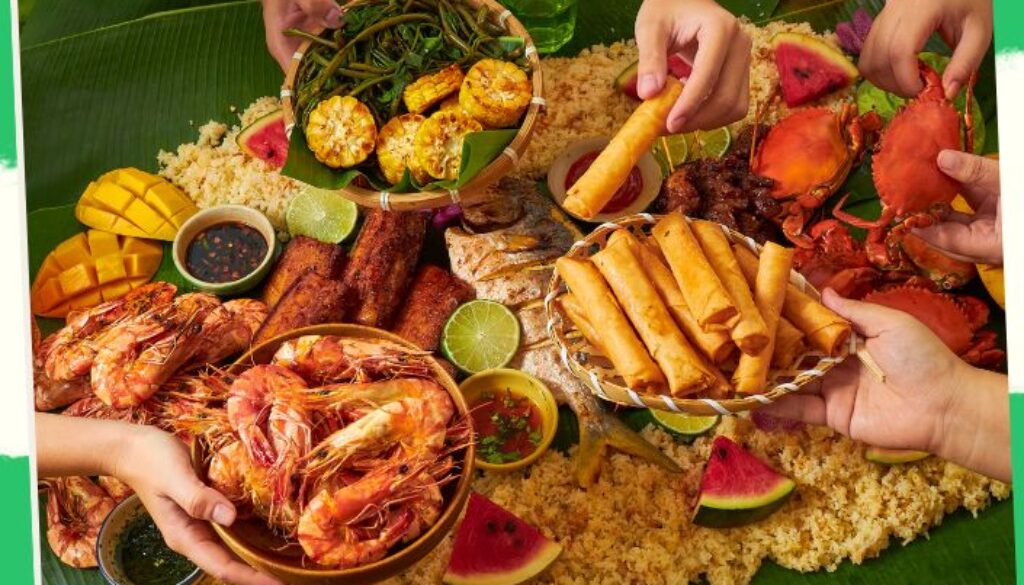From the northern mountains of Luzon to the southern shores of Mindanao, the Philippines is a nation of flavors. Every region tells its own story through food—shaped by geography, tradition, and the Filipino spirit of creativity.
The Philippines Restaurants (필리핀 맛집) experience wouldn’t be complete without exploring these regional dishes, each crafted with love, passed down through generations, and seasoned with cultural pride.
1) Luzon: Hearty comfort and timeless classics
Luzon, the country’s largest island group, is home to some of the Philippines’ most iconic dishes.
- Ilocos: Known for bagnet (crispy deep-fried pork belly) and empanada, Ilocano food celebrates bold, rustic flavors.
- Pampanga: Dubbed the “Culinary Capital of the Philippines,” Pampanga gave the world sisig—a sizzling mix of pork, egg, and chili served on a hot plate. It’s the ultimate comfort food.
- Tagalog region: Favorites like adobo and sinigang dominate here, blending simplicity and depth of flavor.
Luzon cuisine feels like a warm hug—it’s hearty, soulful, and deeply rooted in family tradition.
2) The Bicol region: Where heat meets heart
In Bicol, spice is a way of life. Dishes are defined by coconut milk (gata) and chili peppers, creating creamy, fiery combinations that wake up your senses.
- Bicol Express: Pork simmered in coconut milk and loaded with green chilies.
- Laing: Dried taro leaves cooked in spicy coconut sauce—a perfect example of how humble ingredients can create extraordinary depth.
Bicolano cooking captures both passion and precision—a cuisine that proves comfort food can be daring.
3) The Visayas: Sweet, savory, and seaside freshness
The Visayas region, with its coastal charm, is known for balance—sweet, salty, and tangy flavors harmonizing beautifully.
- Cebu: World-famous for lechon, roasted whole pig with crispy golden skin and juicy meat. Locals say, “You haven’t truly eaten lechon until you’ve eaten it in Cebu.”
- Iloilo: The birthplace of batchoy (a rich noodle soup with pork and egg) and kansi (a tangy beef bone stew).
- Negros: Known as the “Sugar Bowl” of the Philippines, this island specializes in desserts and caramelized sauces that reflect its sweet personality.
Every bite in the Visayas feels like sunshine—bright, balanced, and full of joy.
4) Mindanao: Bold flavors and cultural fusion
Mindanao’s cuisine reflects its diverse heritage, blending Malay, Indonesian, and Arab influences with local tradition.
- Maranao cuisine features turmeric, lemongrass, and coconut, seen in dishes like piaparan (chicken cooked with shredded coconut).
- Satti, a spicy grilled meat dish served with sweet-sour peanut sauce, is a favorite in Zamboanga.
- Pastil—rice topped with shredded chicken wrapped in banana leaves—is the ultimate grab-and-go comfort meal.
Mindanao’s food is both vibrant and grounded, celebrating unity through diversity.
5) The Filipino palate: harmony of contrast
Across all regions, one philosophy ties Filipino food together—balance. Dishes often mix sweet and sour, salty and spicy, soft and crunchy.
It’s not about perfection—it’s about harmony. Every province adds its own rhythm to the national song of flavor.
6) Modern chefs preserving regional pride
Many new restaurants in Manila and Cebu are reviving traditional dishes using modern techniques. From fine-dining spots to themed 필리핀 맛집 cafes, chefs are turning local comfort food into culinary art.
This revival ensures that regional recipes—some centuries old—stay alive and continue to evolve for a global audience.
7) Why regional cuisine matters
Regional dishes remind Filipinos where they came from. They’re not just meals—they’re memories, identities, and love letters to the land.
To taste kare-kare in Pampanga, laing in Bicol, or lechon in Cebu is to taste the Philippines itself.
Final Thought
Every island in the Philippines is a chapter in a story told through food. From the spicy warmth of Bicol to the savory-sweet comfort of Visayas, the 필리핀 맛집 (Philippines Restaurants) scene is a journey through heritage, heart, and harmony.
In the Philippines, you don’t just eat—you experience the country’s soul, one dish at a time.


